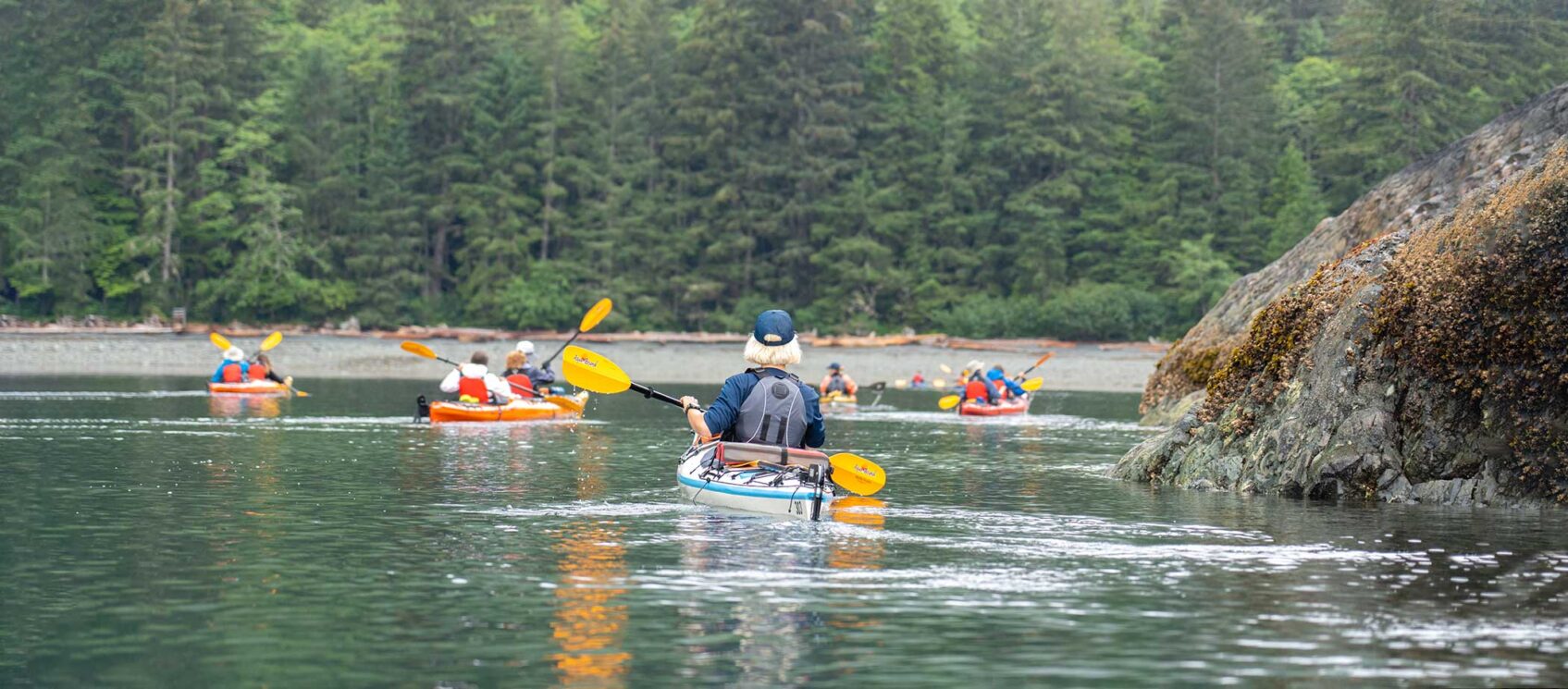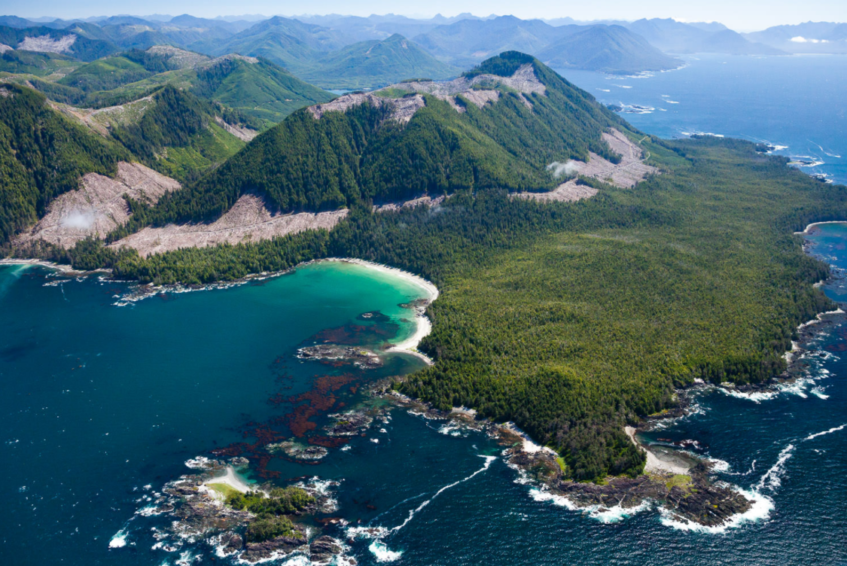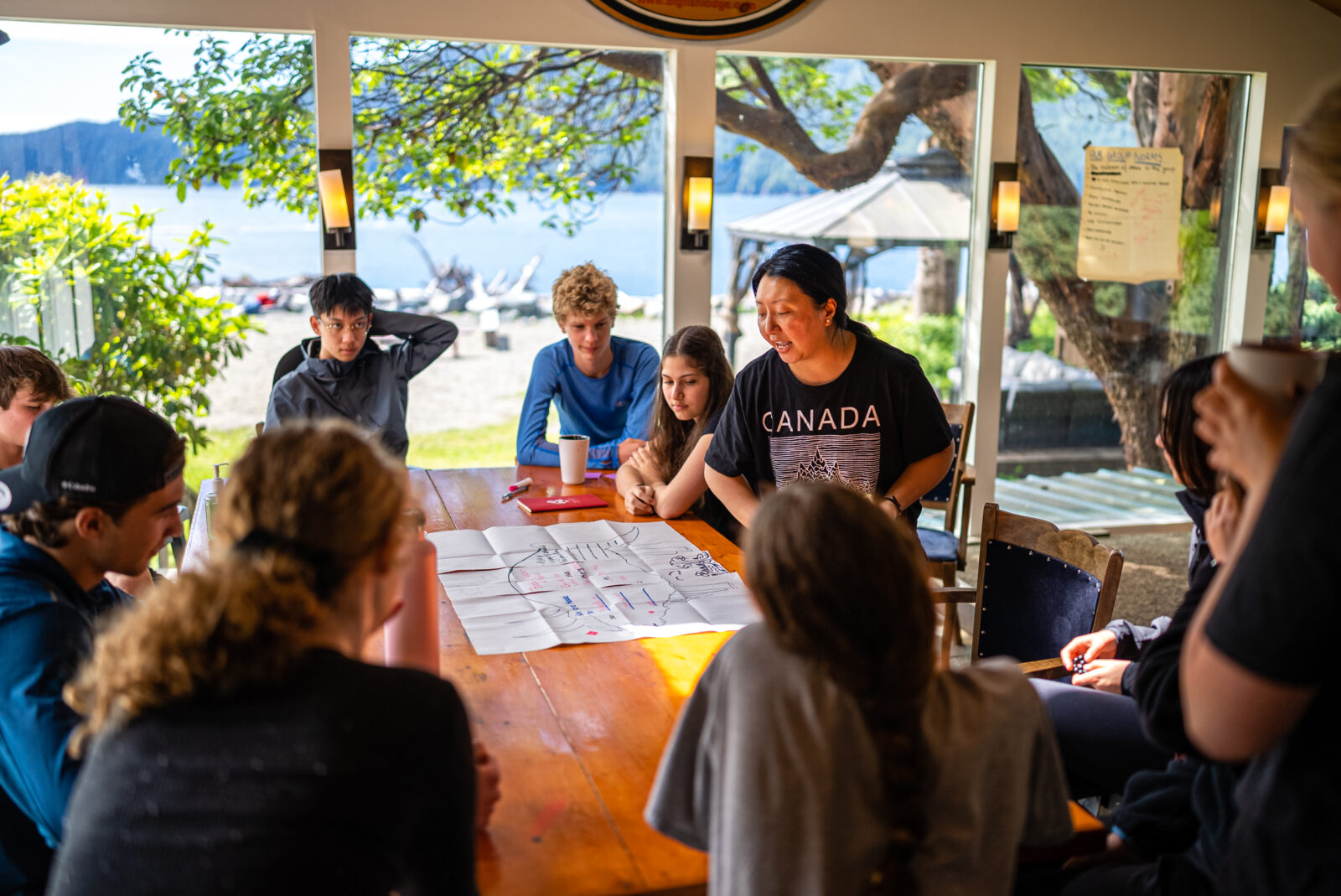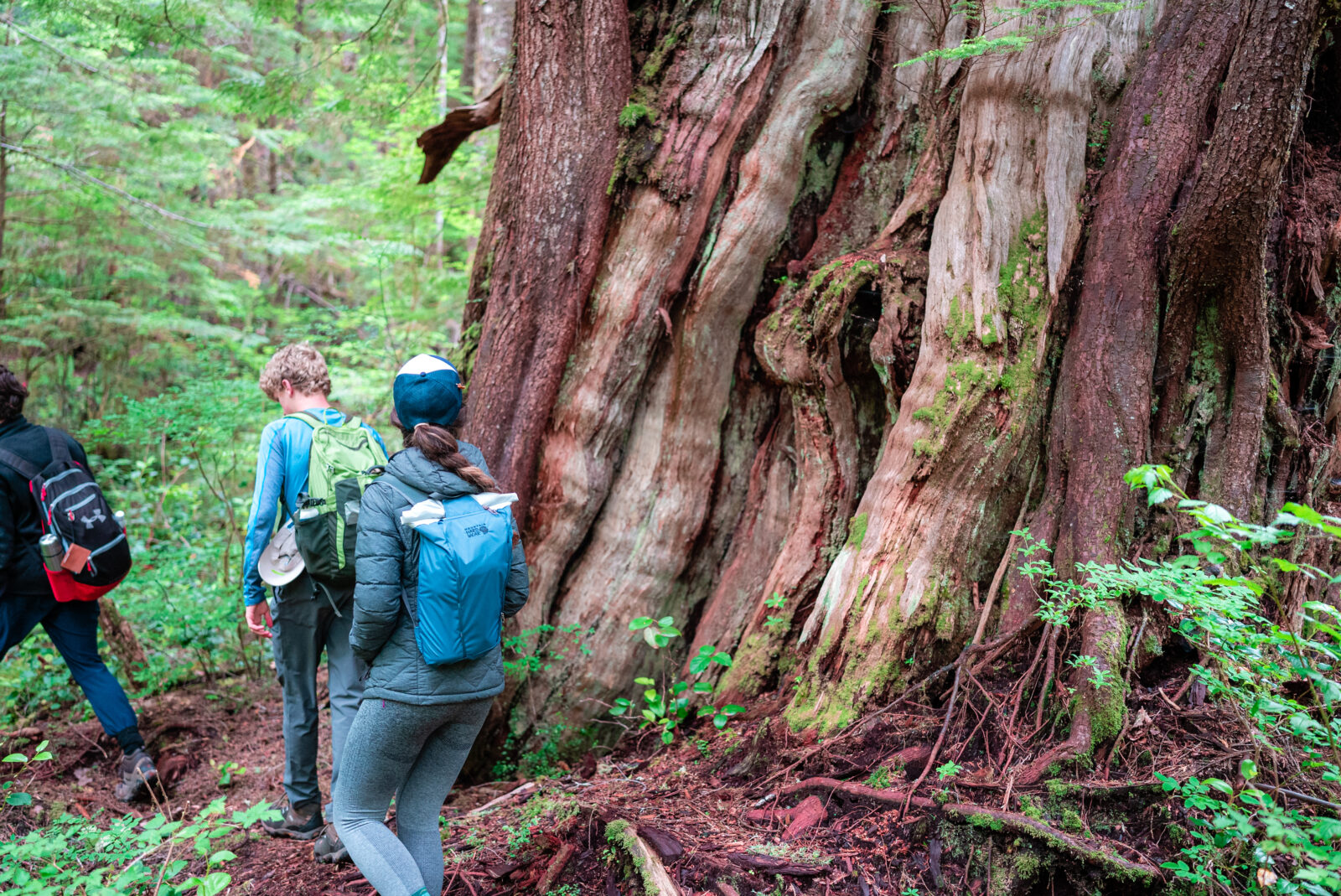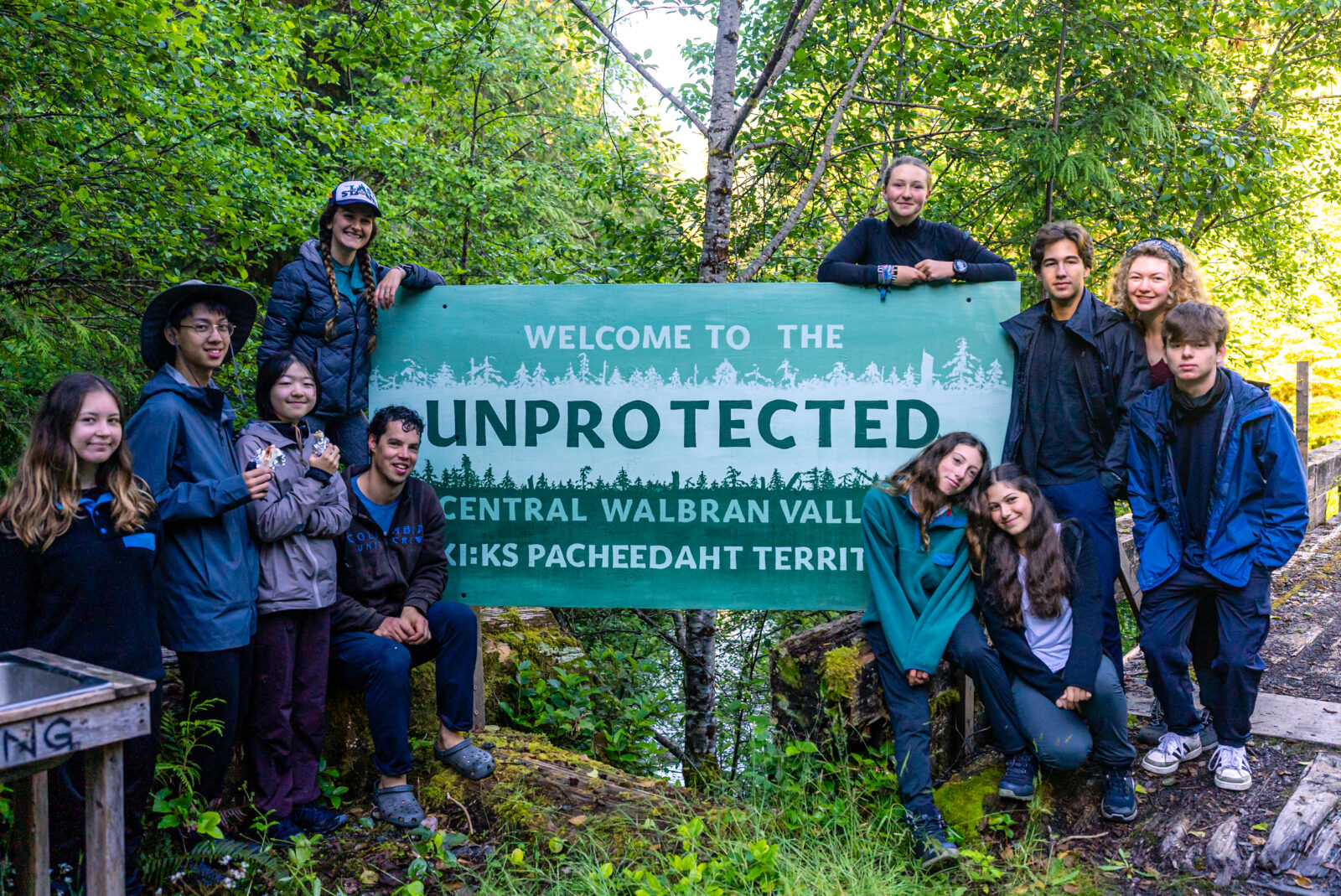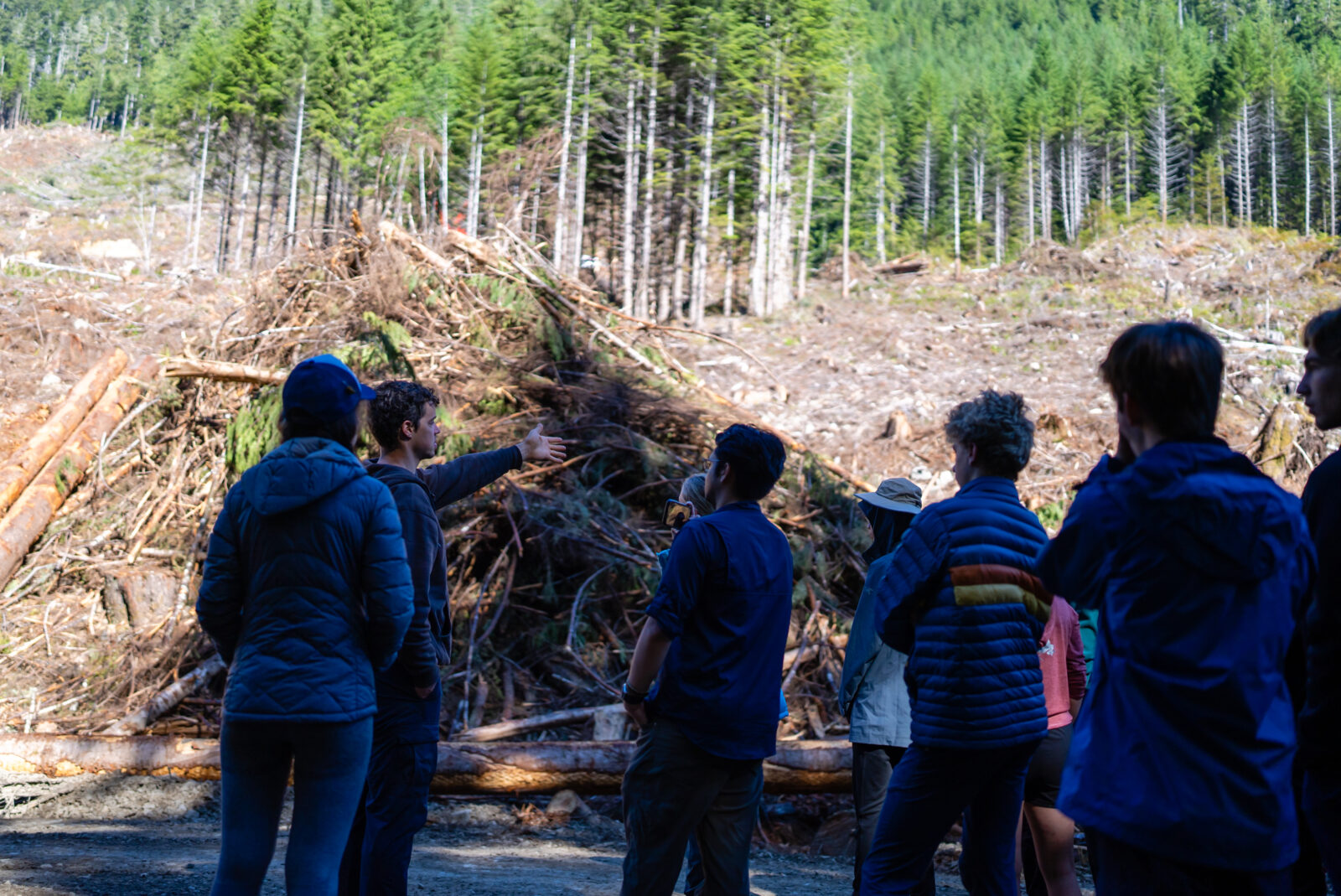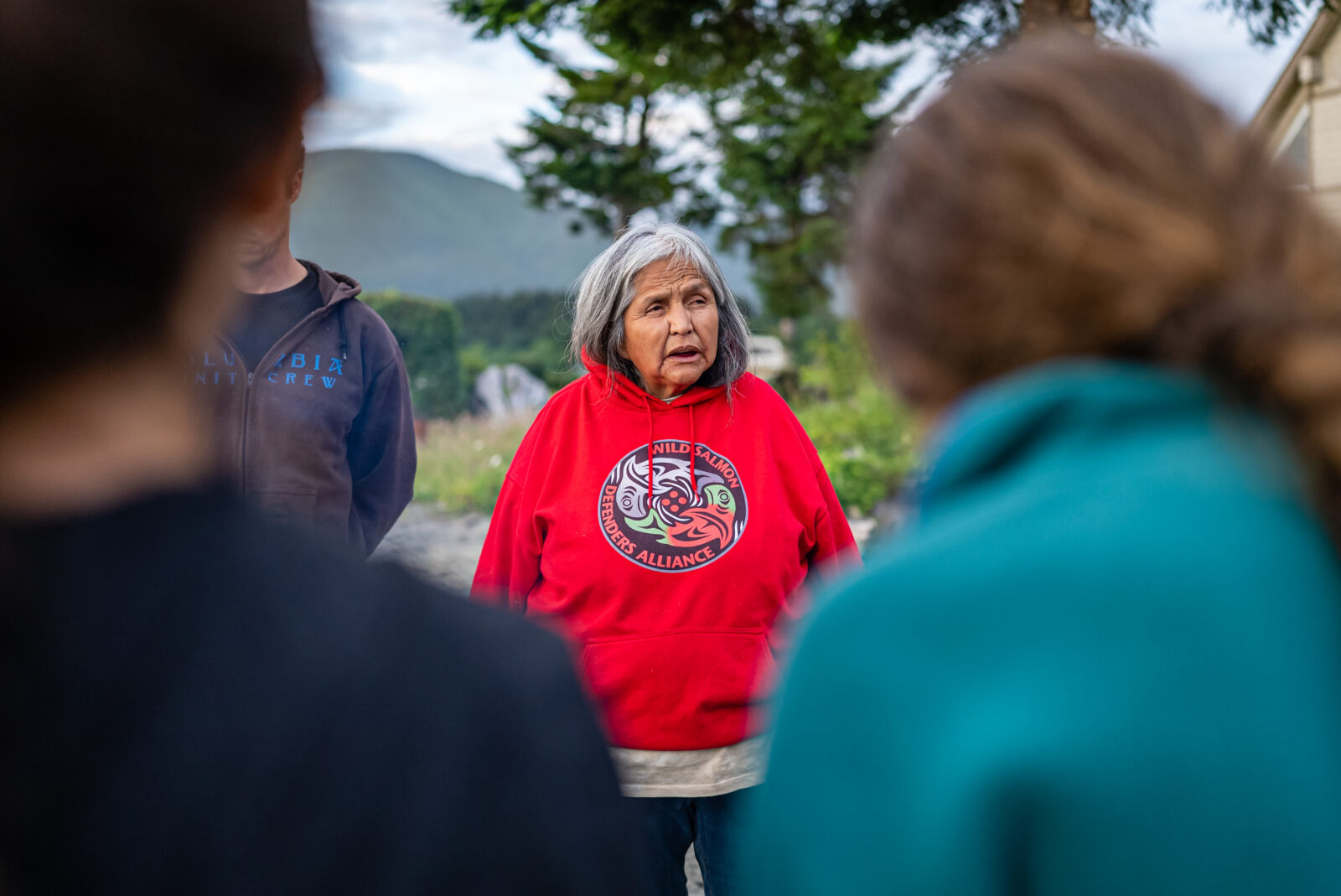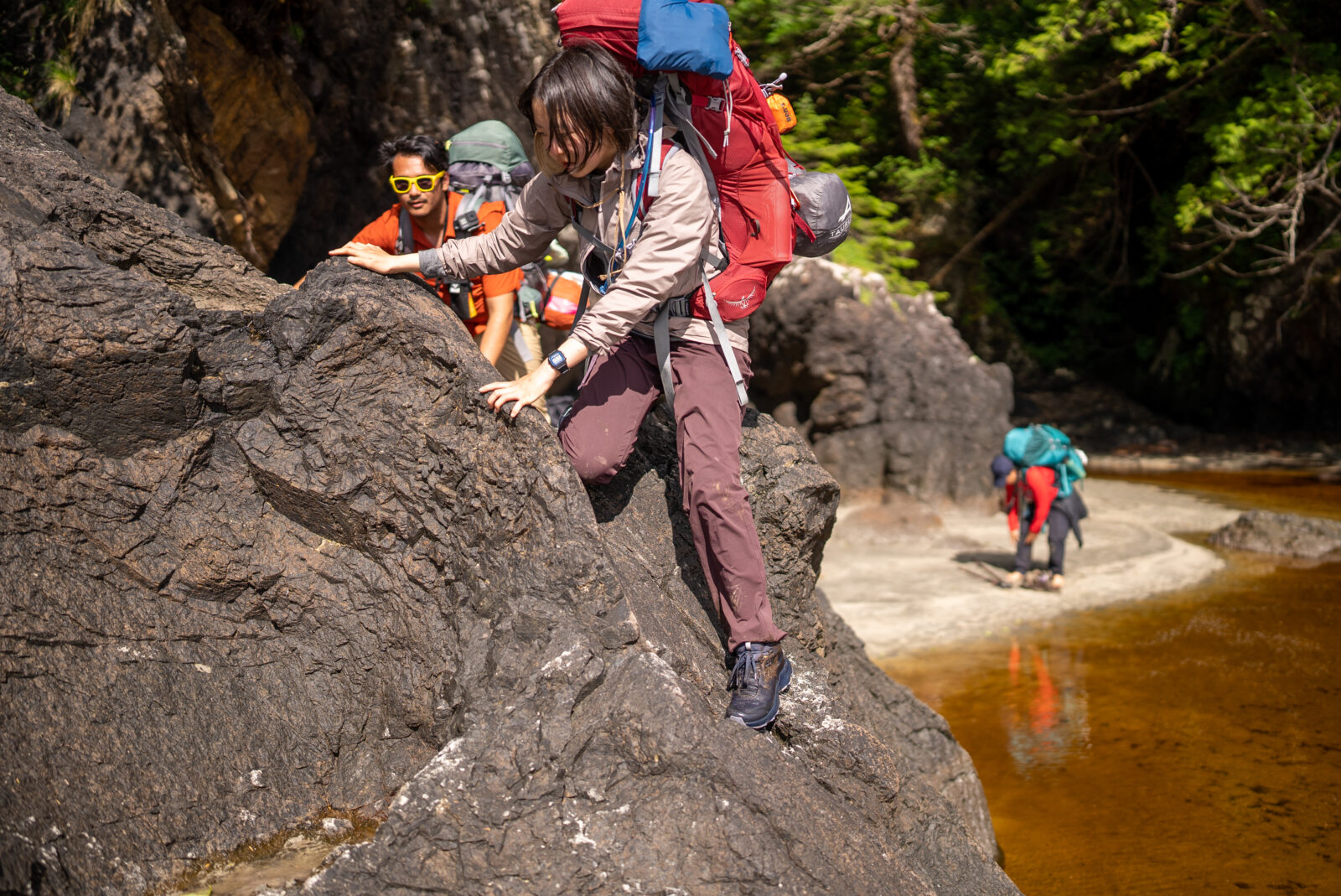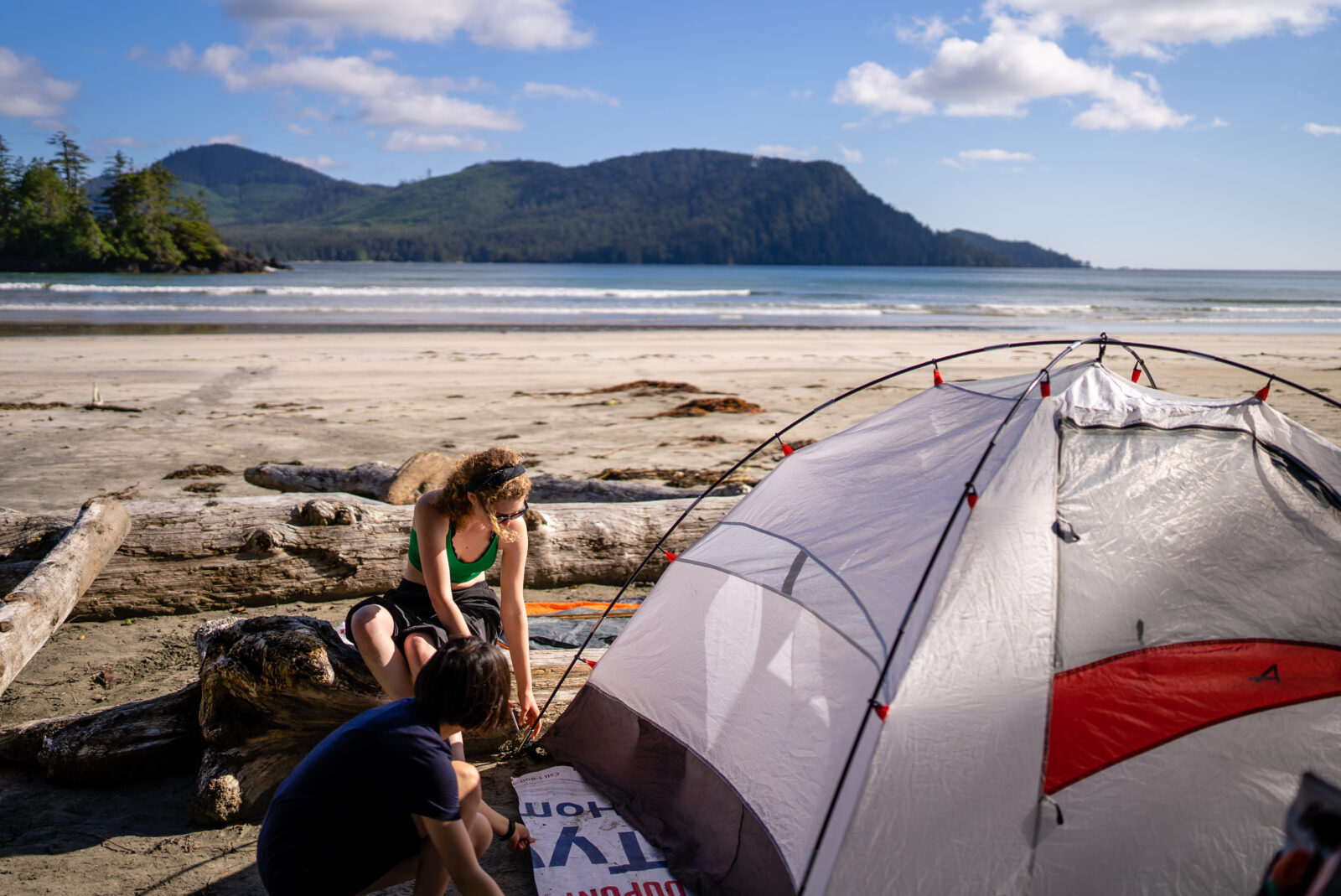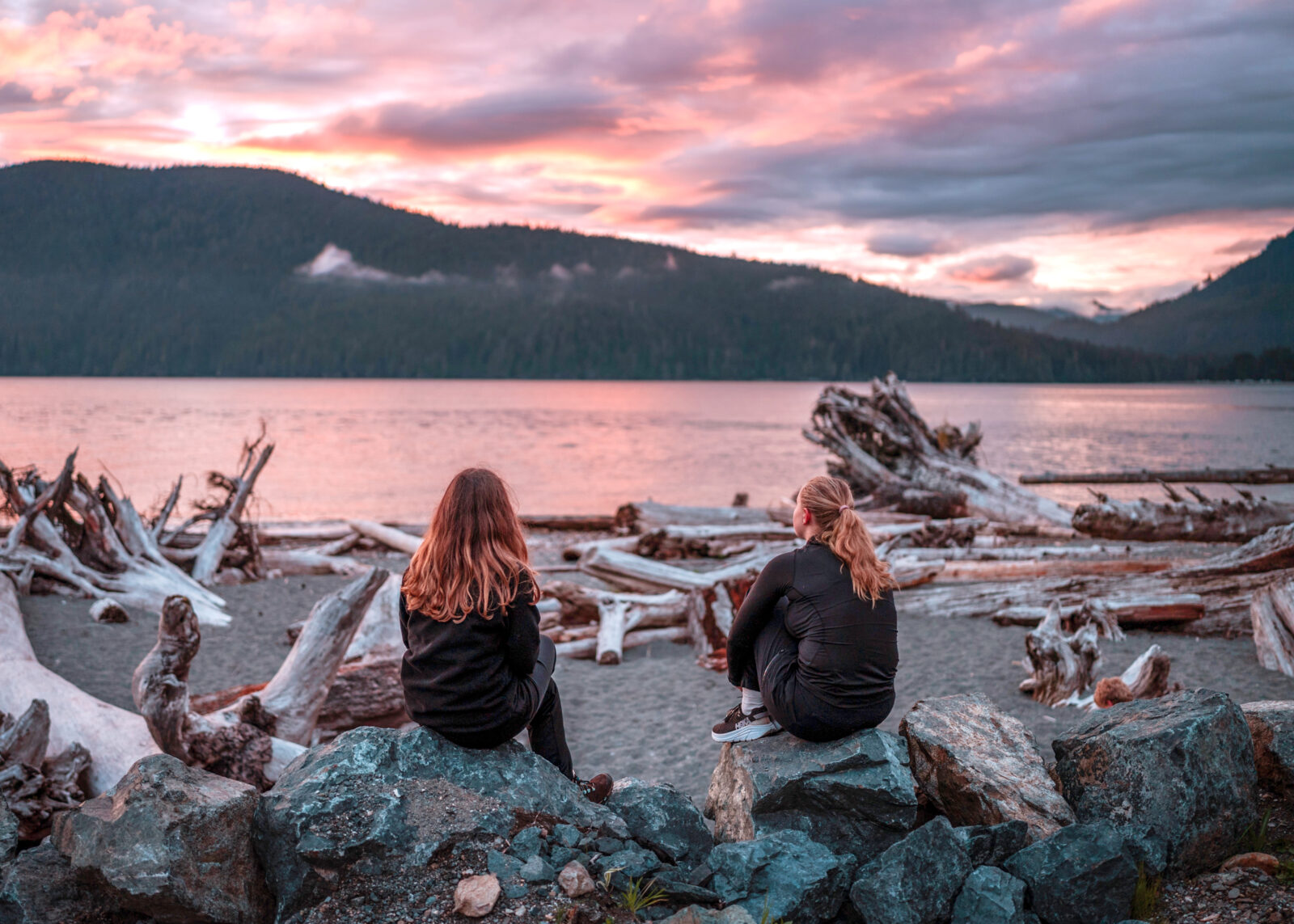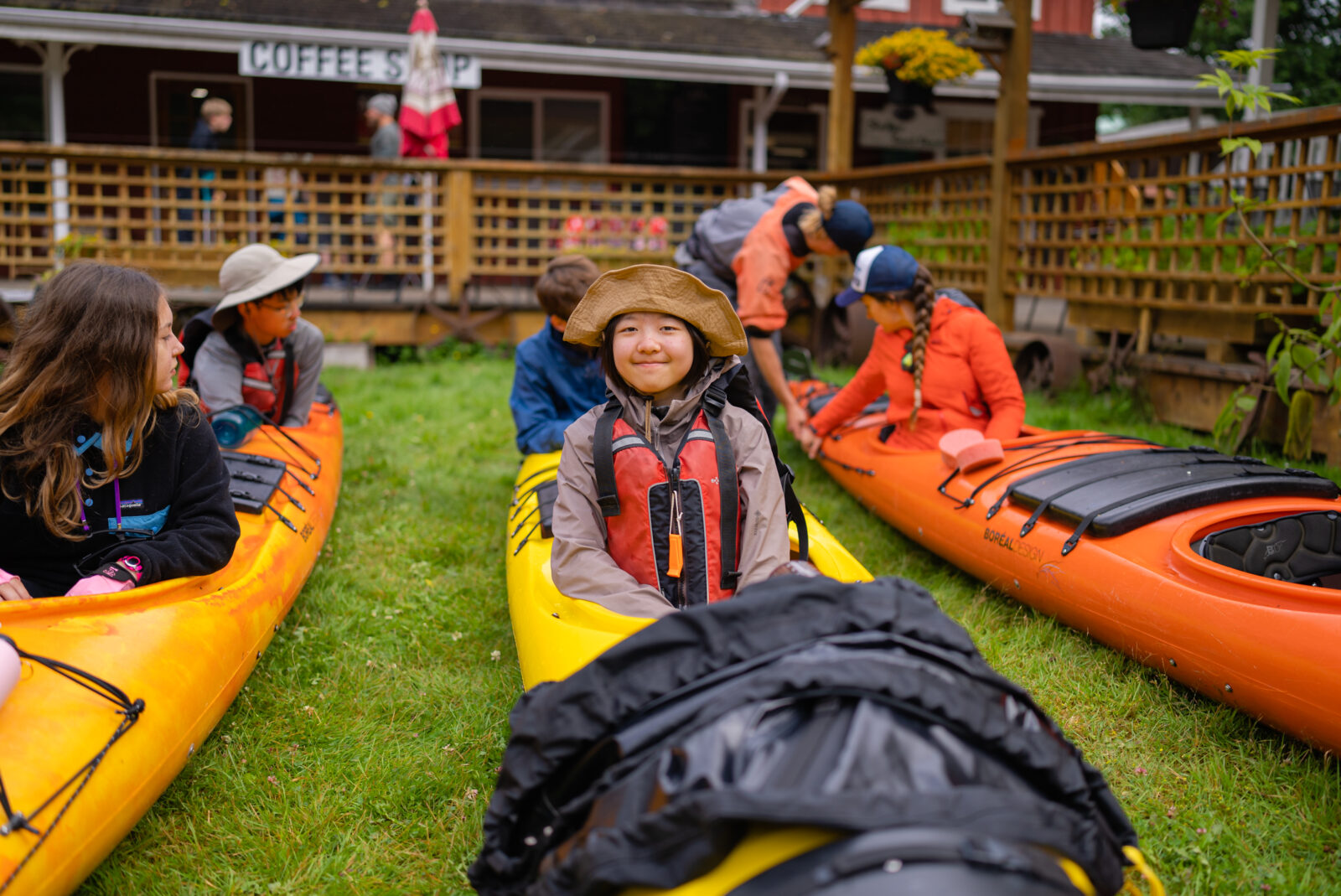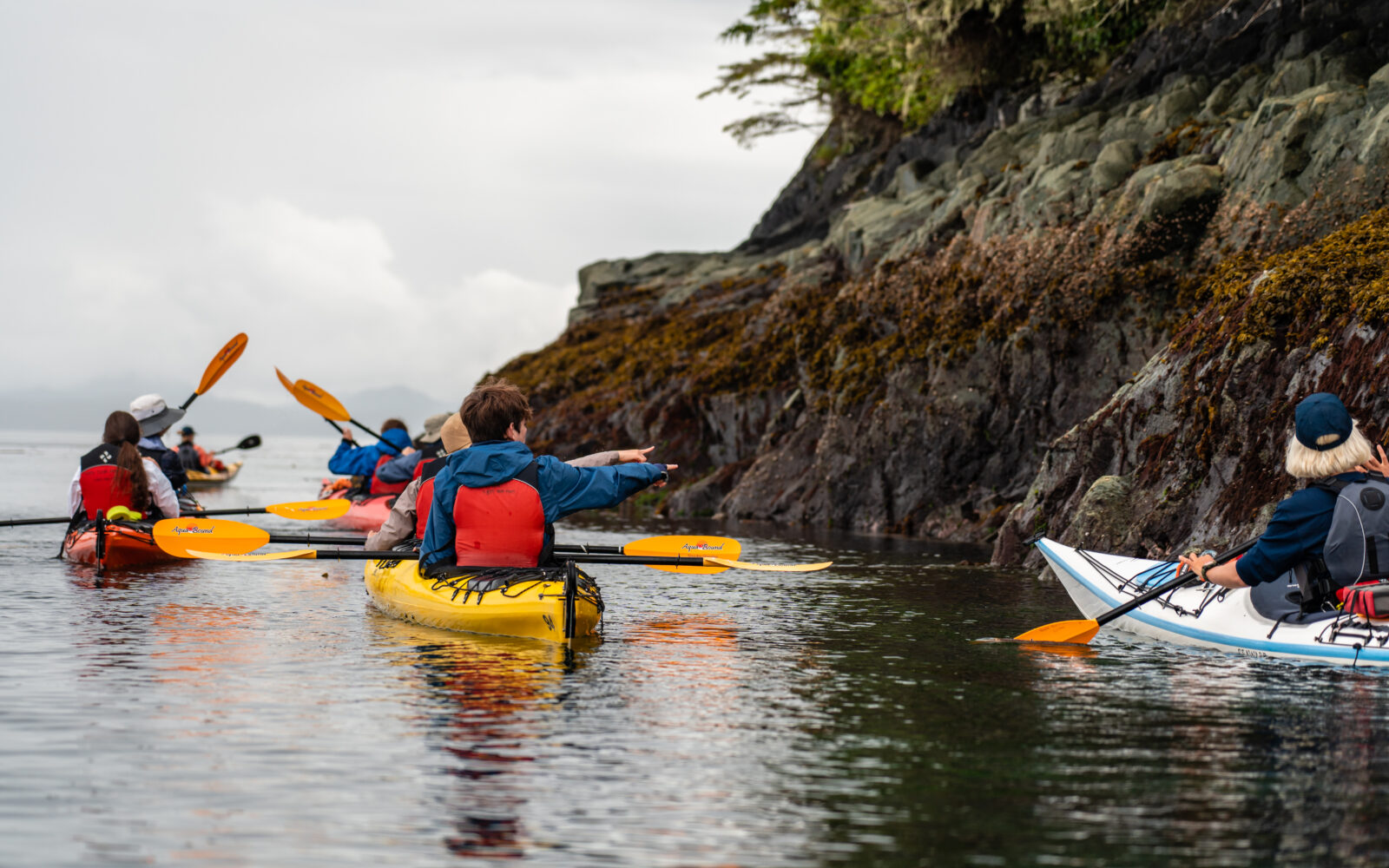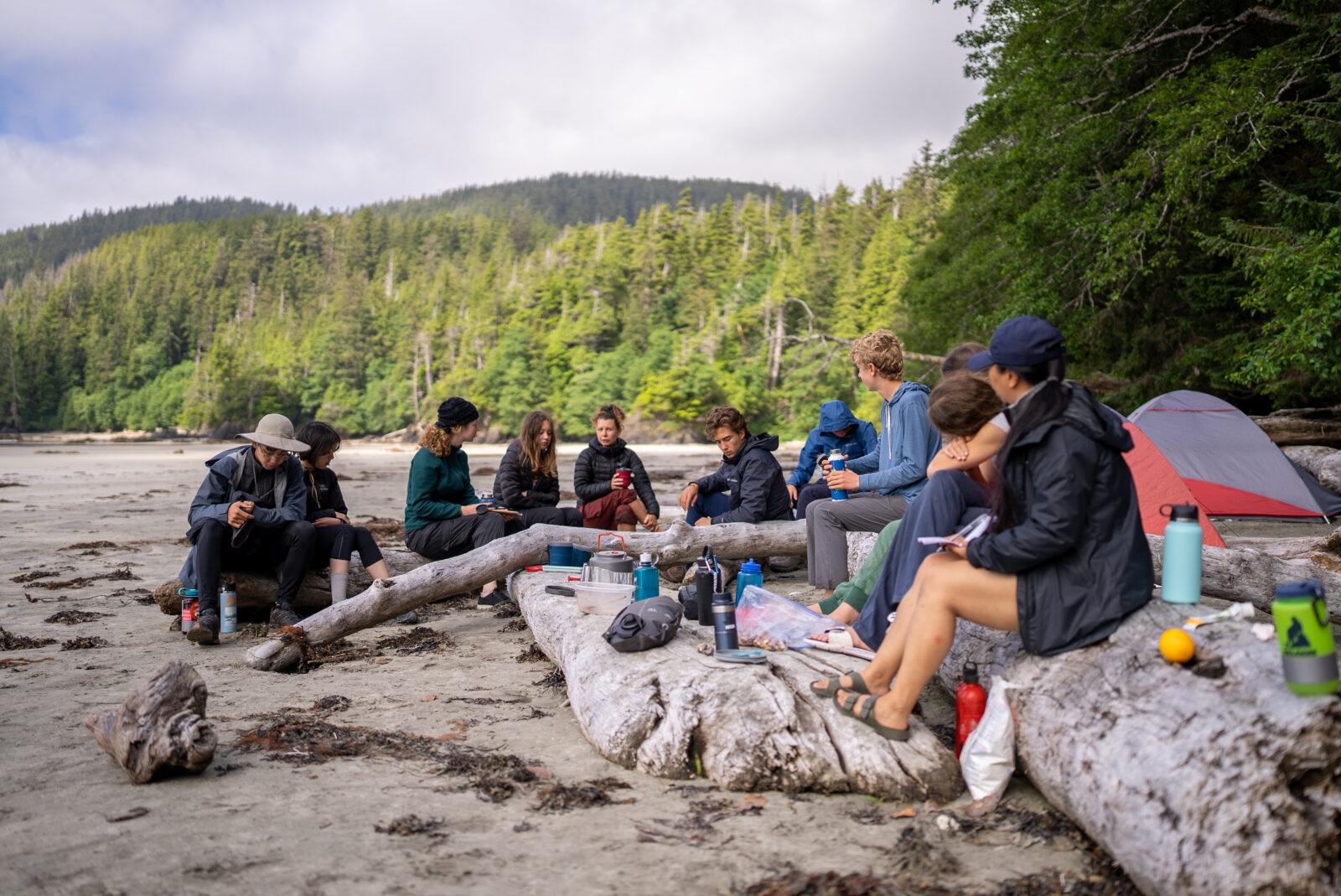British Columbia: The Last Stand (4-week Sample Itierary)
The following is a sample itinerary based on past courses; actual itineraries may vary.
-
Week 1
We begin our journey with an orientation to place and program amidst the inlets and islands of Clayoquot Sound on the Pacific coast. Clayoquot Sound is the ancestral home of Nuu-chah-nulth First Nations, and today its diverse inhabitants are holding the complex legacies and futures bound up with extraction and regeneration. During our time at this UNESCO Biosphere Reserve, we start from an awareness that restoration is also a re-story-ation and learn from local Elders and activists about what it means to enter into good relations with our hosts, each other, and this place. As we come together as a group, paddling in traditional dug-out canoes and hiking through Meares Island among giant trees over 1500 years old, we will also be shining a light on historical processes that have led to wealth accumulation on the one hand and ecosystems destruction and Indigenous dispossession on the other. Balancing those explorations with stories of local indigenous resurgence, leadership, activism and ways forward, we will learn about the 1993 Clayoquot protests, also known as the War in the Woods, and how they shaped this region. From Clayoquot Sound we travel south to Pacheedaht First Nation territories, where we will experience life and organizing at the grassroots of land defense. -
Week 2
Visiting the old-growth blockades during what is shaping up to be British Columbia’s Cedar Summer, we’ll meet Elder Bill Jones and an intersectional movement making a last stand in defense of the few intact ancient forests and watersheds. We will encounter Big Lonely Doug, an iconic 1000 year old Douglas Fir, standing today in the midst of a clearcut. In this patchwork of untouched and ravaged landscapes, we will meet arboriculturists with whose help we will climb into the enchanted world of the rainforest canopy, learning techniques used by both researchers and direct action movements to understand and protect the forests. Suspended several floors off the ground, we will seek to comprehend both the devastation and magnificence around us, as well as our roles and agency going forward. -
Week 3
Moving on down the coast, we hike through the verdant forests and rugged beaches, punctuated by suspension bridges high above creeks spawning salmon, and camp on sand next to the waves. By day we will keep our eyes on the water, to catch glimpses of the grey, blue, and orca whales on their migration routes. The trail is an ideal place to reflect on all that we have seen and experienced, and to live in community and practice foundational leadership in gratitude and reciprocity to one another and the land. Each of us will develop a practice that goes beyond the wilderness mantra of Leave No Trace to instead leave traces of care. On our next and final leg, we travel to the southern Gulf Islands, the ancestral territory of the W̱SÁNEĆ First Nation, to explore Indigenous perspectives on eco-cultural revitalization. -
Week 4
Traveling mainly by paddle, we’ll follow the traditional waterways between islands, exploring Indigenous food justice, localization, permaculture, and efforts to conserve and regenerate biodiversity. We’ll contemplate what it means for the Salish Sea - the busiest stretch of marine vessel traffic in the world - to also be the only home to the critically endangered southern resident orcas, as well as a site of trans-border Indigenous-led conservation efforts. We end our journey together in reflection and celebration on a remote permaculture farm, preparing to re-enter our worlds carrying forward all the good work.

